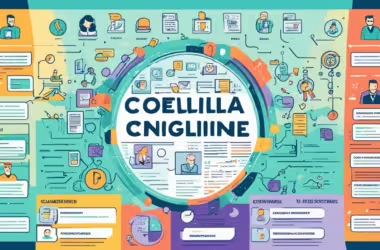Are you making the most out of your budget? Or just sticking to old ways? Knowing how to budget in IT is crucial. It affects project success and how well you manage resources.
IT budgets have grown massively in the last 20 years. For example, a basic app might cost $5,000, while a complex one can be over $150,000. This shows the importance of managing resources well to keep costs down and achieve success.
In tech, being open and strategic with resources can win trust from partners. This trust leads to lasting relationships. We’ll explore best practices for aligning your IT budget with company goals. Plus, we’ll cover how the right software tools can improve your resource management.
Understanding IT Budgeting
Effective IT budgeting is key to linking tech spending with an organization’s big goals. The IT budget importance is huge because it helps control costs and use resources well to meet financial targets. A great IT budget is not just for tracking expenses. It’s also a map for finding ways to make business better with technology.
Importance of an IT Budget
The need for an IT budget comes from the fast changes in technology and its business effects. Planning your IT budget well stops spending too much. It makes sure you use your money smartly. A good plan for IT spending helps see where money goes now and what you’ll need later. This plan makes everyone responsible and checks if tech investments pay off.
Key Components of an IT Budget
Knowing the parts of an IT budgeting is important for planning your money right. The main parts include:
- Personnel Costs: Pay, perks, and learning for IT workers like project leaders, QA testers, and UX/UI creators. For instance, project managers may get $19-$45 per hour, while QA testers earn $28-$35 per hour.
- Hardware and Software Expenses: Money spent on tools and tech needed for work.
- Capital Expenditures: Big investments spread over 5-10 years, like software making costs until the product works well technically.
- Operational Expenses: Regular costs like payrolls and worker benefits that keep the IT team going.
- Project Expenditures: Money set for specific projects, including planning, making, testing, and starting phases.
- Contingency Funds: Extra money saved for any unexpected IT costs that pop up.
Components of a Strategic IT Budget
Understanding the strategic IT budget is key for managing resources well. This budget covers three main areas: operational expenses, capital expenditures, and project expenditures. Each plays a vital part in making sure tech investments match the organization’s goals.
Operational Expenses
Operational costs are what keep IT services running every day. They take up about 60% of total expenses over time. These costs include:
- Personnel costs, covering salaries, benefits, and training for IT staff.
- Software expenses, which involve licenses, subscriptions, and maintenance.
- Cloud services and managed service subscriptions.
- Hardware maintenance and upgrade costs.
Knowing these costs helps businesses plan budgets that meet daily needs.
Capital Expenditures
Capital spending is for long-term tech improvements. This includes expenses for:
- Purchasing new hardware, like servers and networking gear.
- Upgrading systems to keep up with business changes.
- Starting new software projects that need a big investment at first.
This spending is key for staying ahead, as it requires big financial commitment.
Project Expenditures
Money set aside for IT projects falls under project expenditures. This includes:
- Investment in system upgrades for better performance and security.
- Development costs for fresh software projects.
- Contingency funds for unexpected issues during project rollout.
Making sure these projects have enough funds is crucial for sticking to the budget.
The Role of IT Strategy in Budgeting
A well-defined IT strategy is key to lining up the IT budget with business goals. This match ensures technology spending helps achieve company aims. It makes the most of returns and optimizes how resources are used. For success, it’s crucial to involve stakeholder involvement when budgeting.
How to Align IT Budget with Business Goals
To match the IT budget with company objectives, you need to:
- Spot the main business aims to shape the IT plan.
- Get stakeholders involved early to align different department’s efforts.
- Keep reviewing and tweaking the budget for shifting priorities and market changes.
- Create a feedback loop to check how well IT spending is aiding business success.
This method ensures clarity and confirms spending meets short and long-term goals. Businesses must focus on aligning IT strategies to adapt to new tech smoothly.
Involving Stakeholders in the Budget Process
Getting stakeholder involvement right is vital for a smooth IT budgeting process. This means including top execs, department leads, and important team members. Their mixed views help improve decision-making. Key actions include:
- Organizing workshops to figure out IT needs and what’s most important.
- Promoting open talks to boost teamwork across departments.
- Using data for smart choices on where to put money.
A team effort helps focus on IT projects that drive growth, fit the company’s future direction, and handle tech changes well.
The Importance of Cost Management in IT Budgeting
Effective IT cost management is key to keeping finances stable and using resources well. It involves careful monitoring and managing of costs. This helps businesses make better investment choices.
Regularly checking costs helps find unnecessary spending. This way, companies can cut costs without harming their goals.
Monitoring and Controlling Operational Costs
Automated time and expense tracking systems help control costs better. They make managing expenses easier and reduce mistakes. This gives a clear view of how money is spent.
With accurate tracking, companies can see where to best use their funds. This leads to smarter financial decisions.
Identifying Unnecessary Expenses
Moving to cloud-based tracking solutions can save money and simplify operations. Spending policies enforced by tracking software help prevent money mishaps and fraud. This careful check helps improve budgeting and IT budget use.
Balancing Costs and Benefits
Knowing how to balance costs and benefits is key in IT investments. A deep look into IT investment helps companies grasp financial impacts. It involves a cost-benefit analysis. This analysis compares expected costs with possible gains like better productivity and stronger security.
Evaluating IT Investments
It’s tough for organizations to decide where to put their resources. A detailed IT investment evaluation sorts projects by their fit with company goals. Decisions should consider team skills, profit potential, and growth capability. Focusing on testing and quality ensures projects hit their marks.
Optimizing Performance Levels
Regular tech assessments are crucial for peak performance. Continuous review frameworks push for better IT spend results. Tracking how projects do against important metrics spots inefficiencies. Then, plans can be tweaked for stronger results and aligned resource use.
Identifying and Reducing Unnecessary Expenses
To optimize budgets, it’s key to identify extra IT costs. Checking both one-time and recurring expenditures matters a lot. This includes looking at software licenses, upkeep fees, and other running costs. Spotting where money is overspent or wrongly spent is crucial.
Here’s how to cut costs:
- Review vendor agreements for better deals.
- Make some processes automatic to save time and money.
- Choose open-source software to avoid license costs.
- Use teams with different skills to use resources well.
Big or small projects affect your budget. Hence, it’s important to check everything that adds to your costs. Watch out for hidden fees from maintenance, adding things, or doing work over. Spotting these is key to finding IT costs you don’t need.
Plan early and know what you need to save money. Bringing people in early avoids costly changes later. This way, you keep your budget in check while using your resources well.
Organizations focused on saving money use their resources smartly. With agile methods and ongoing delivery, companies can do projects better and manage their budgets well.
Budgeting Resource Allocation Software Development
In today’s fast-changing tech world, getting the budgeting right is key for success. Using the best budgeting software helps companies manage money well and hit their goals. These tools make planning finances smoother and boost efficiency in setting up budgets for software projects.
Tools for Effective Budgeting
Robust budgeting software gives companies the power to make smart choices with live data. They help by:
- Real-time expense monitoring to watch how money is spent.
- Automated budget tracking for different projects to manage resources well.
- Data analysis capabilities for understanding spending habits and finding ways to save.
Quickbase is a great tool that helps businesses see where their money goes. It helps them put more into important projects.
Leveraging Technology for Efficient Resource Management
Utilizing top-notch tools for managing resources is crucial, especially with today’s economic challenges. Companies like Jellyfish turned to scenario-based budgeting in 2023. This lets them plan flexibly for different sales forecasts and team sizes.
Also, cutting down on surprise tasks by tracking KTLO helps focus on key projects. By adjusting budgets with this approach, tech leaders can focus more on important work. They boost team output and smartly use resources for big-impact tasks.
IT Budgeting Best Practices
Implementing IT budgeting best practices can boost how resources and costs are managed. A well-planned budget approach aligns financial planning with the goals of an organization. It creates a strong foundation for making money decisions.
Starting Early and Reviewing Past Budgets
Starting the budget process early gives ample time for thorough analysis. Reviewing previous budgets helps understand past spending. This includes looking at costs for staff, hardware, and software.
This insight guides future budget choices. It highlights spending trends and helps tweak future plans. This ensures the budget meets the organization’s unique needs.
Prioritizing Initiatives
It’s vital to prioritize IT projects when dividing up the budget. Organizations should assess the strategic value of projects. This ensures they match up with overarching objectives.
This review leads to smarter spending on big projects and daily costs. It also makes funding more transparent. Being agile in budgeting helps agree on what’s important, avoiding waste on minor projects.
Maintaining Flexibility
Being flexible in budgeting is crucial for tackling unexpected issues or opportunities. This adaptability lets organizations tweak budgets to match shifting business priorities. It includes setting aside contingency funds for unforeseen IT costs.
Using this flexibility wisely is crucial for good IT budgeting. It ensures that resources are ready for any surprise expenses or new investments.
Conclusion
Effective budgeting and resource management are key for tech leaders. They ensure growth and better operational efficiencies. Grasping IT budgeting details helps make smart financial choices. This leads to success in the competitive tech world.
Organizations must align their budget with their overall goals. Every dollar should help achieve project results. This strategic approach boosts long-term success.
For successful tech budgeting, embrace best practices and tech use. Consider resource availability and project needs to boost productivity. Focusing on team members’ skills leads to better project results and a happier workplace. This shows why monitoring and adjusting resources is crucial.
Effective budgeting balances costs and benefits. Using resources well reduces waste and finishes projects on time and budget. This gives companies a competitive edge. It shows how vital strategic resource management is for thriving in the tech market.






